Stretching lays out numerous benefits for expectant women. It can help you keep in shape, relax, and get ready for giving birth. It can also assist to soothe several of the pains as well as pains you might be feeling. However, there are a few points to think about prior to starting. Relaxing is a hormonal agent generated by the body. Relaxing degrees enhance throughout maternity. It aids in the leisure of the cervix as well as tendons throughout labor and shipment.
Relaxing also lubricates and loosens up the pelvic joints and tendons, enabling you to overstretch in tasks like YOGA. As a result, extending too intensely can be high risk, as it might cause damage. Try not to push deeper into positions than you can in the past you were pregnant to stay clear of any kind of potential concerns. Doing it Carefully and gradually needs to be your motto if you are a beginner.
Prior to doing yoga exercises during pregnancy, make sure you have your medical professional’s consent. A workout could be risky if you have pregnancy concerns.
Both the mom and the child can gain from prenatal yoga Breathing methods and mild extending are its focus. These programs can help you end up being extra versatile and ready for labor.
If you are expecting, a prenatal yoga session in a studio or in the house can be a great alternative. Understand the breadth of prospective benefits, along with what a regular class makes up and critical security factors to consider, before beginning prenatal yoga exercise.
Benefits of prenatal yoga exercise
At least thirty minutes of task each day is beneficial to both you as well as your baby. You do not need to exercise for extended periods to benefit from exercise. Prenatal yoga is a low-impact workout program that can help you boost your mood and rest, enhance, and stretch your muscles, and minimize lower back pains and various other maternity signs.
Prenatal yoga exercise can improve sleep, minimize tension and anxiousness, increase stamina, adaptability as well as endurance of muscles required for childbirth, and reduce reduced back pain, queasiness, frustrations, as well as lack of breath. It can additionally:
- Lowers stress and anxiety as well as despair and anxiety signs and symptoms
Depressive signs can be reduced by integrating focused activity and regulated breathing. Slow, balanced breathing activates the neurological system and protects against cortisol, which has been connected to clinical depression in too many doses.
- Boosts blood circulation
Yoga stretches, as well as motions, assist to enhance blood circulation to the heart. A lot more oxygen-rich blood is sent out to your baby as blood flow improves. This makes certain that your child is established normally.
- It improves your labor experience
Starting prenatal yoga in any trimester can help you unwind and remain pleased as you prepare to give birth. Throughout labor, meditation, as well as breathing exercises, have been verified to aid with discomfort and stress, and anxiety. Being self-assured and refining your coping skills will likewise aid you to have a much less difficult birth.
- Helps you in developing a support system
Prenatal yoga exercise programs can also improve your social life by allowing you to meet various other expectant females. Giving birth and postpartum are made less complex with a solid support group. Stress and anxiety concerning the birthing process may make labor harder. It may be reassuring to be able to speak about your sensations and hear other individuals’ experiences.
A couple of suggested yoga poses:
Try these placements for a calming exercise that will certainly aid you to handle any type of pain and pains you may experience while expectant.
Cat Cow (Chakravakasana)
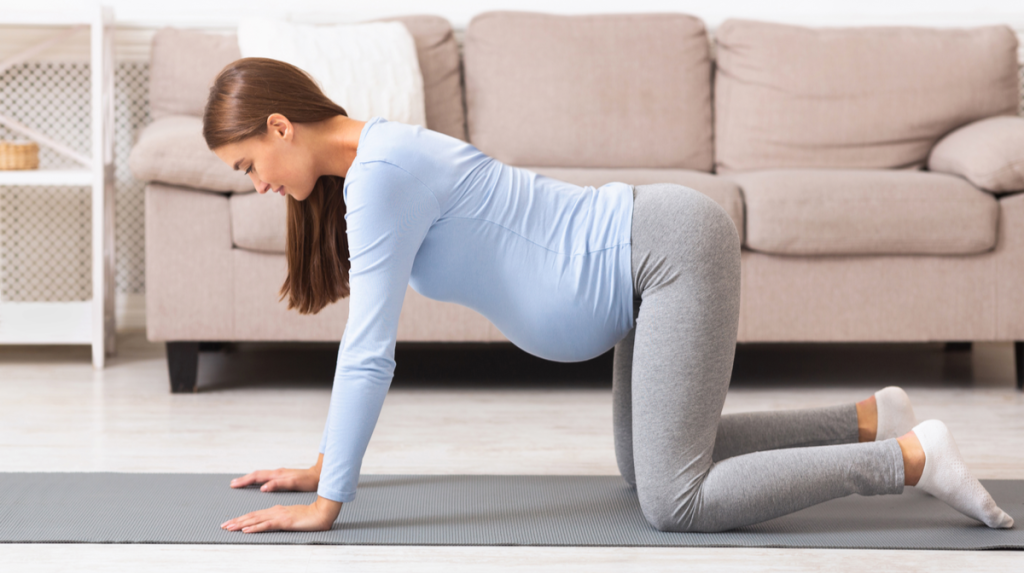
This stretch will certainly assist to strengthen your lower back while also decreasing hip as well as lower back discomfort and round tendon discomfort. It can additionally aid to boost back mobility. Increasing the circulation of your spinal liquid assists to keep it oiled throughout the day. This can aid protect against future discomfort while additionally relieving existing pain.
- A Yoga exercise floor covering is a needed tool.
- Back, arm, abdominals, and back muscle mass all worked.
- Begin by coming down on all fours. Maintain a flat surface area on the mat with the tops of your feet, shoulders directly over wrists, and hips straight over your knees. Drop your belly as well as curve your back as you inhale, however, keep your shoulders curtailed and down and also look front as well as up. This is Cow. Exhale by pressing your hands together and also rounding your upper back while looking in towards your tummy. This is Cat. Remain to relocate an arching motion on your inhales and round on your exhales. Repeat for an overall of 5 times.
Seated Piriformis Stretch (modified Fifty percent Pigeon)
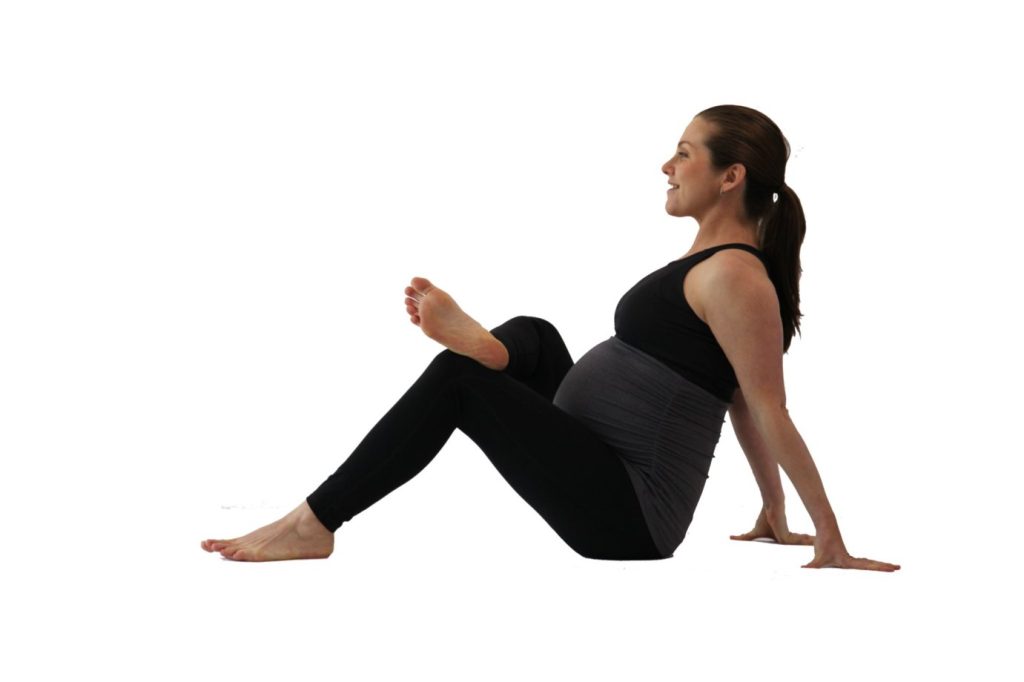
This stretch is valuable for individuals who struggle with low back or sciatic pain.
During pregnancy, the piriformis muscle, a tiny muscular tissue deep in the glutes, could spasm.
Due to its tight organization with the sciatic nerve, it regularly triggers back and legs pain. Extending this muscle mass delicately can aid soothe rigidity and pain.
- The Chair is a needed device.
- Muscular tissues utilized consist of the spine, piriformis, and glutes.
- Place your feet level on the ground and sit in a chair. In the shape of the number “4”, go across one foot over the various other knees. Gradually lean forward with a level back as you exhale till you really feel a stretch in your lower back and butts. As opposed to crinkling your shoulders toward your lap, try lengthening your spinal column. Preserve this position for 30 secs. Repeat on the contrary side.
Child’s Pose (Balasana)
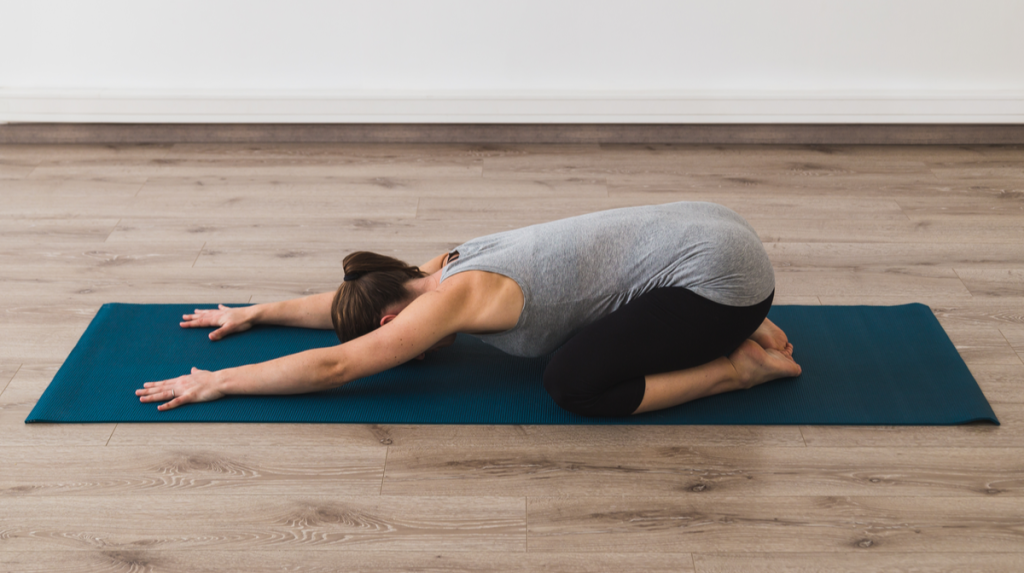
This resting stance is perfect for stretching excruciating hips, hips, and also upper legs softly. The back, specifically the reduced back, will be stretched also.
Gluteus maximus, potter’s wheels, hamstrings, and spinal extensors are all muscular tissues that can function.
On the floor covering, begin on all fours with your knees simply below your hips. Ensure your big toes are in contact. This will permit your belly to move in between your knees and relieve pressure on your hips. If touching your toes places any kind of stress on your knees or does not allow sufficient room for your tummy, you can widen them. Inhale and notice just how your spine grows longer. Take your butts to your heels and lower your heads to the mat as you breathe out, putting your chin to your upper body. Put your forehead on the ground as well as kickback. If the ground is too away, you can fold a blanket or use a yoga block to rest your head on. Preserve an outstretched arms placement. A minimum of 5 deep and consistent breaths must be held.
Bridge (Setu Bandha Sarvangasana)

Bridge offers a mild stretch for your hip flexors during pregnancy. It can also assist with the strengthening of your lower back, abs, as well as glutes. It will certainly help in the alleviation of the hip as well as lower back pain.
Note that in yoga, the bridge is thought of as a backbend. While big backbends need to be prevented during pregnancy, this moderate stretch can help with aches and discomforts in addition to pelvic recognition. This can help you when you remain in labor.
- Yoga block (optional) for restorative or more requiring settings is required.
- The Gluteus maximus, hamstrings, quadriceps, rectus abdominis, and hip flexors were all exercised. Rest flat on your back, knees bent, and feet flat on the flooring. They should be around hip size apart, although they can be further apart if it is extra comfy. Keep a straight line of sight with your arms close to your body and, preferably, bend your legs to ensure that your fingers can forage the backs of your heels. Curl your pelvis up until your lower back is gently pressed versus the floor as you breathe in, then slowly lift your hips and back off the ground, pressing uniformly right into your feet while maintaining a neutral spinal column. Hold the setting for a couple of counts. Roll your spine back onto the ground, one vertebra at a minute, while you exhale. Ensure your spine is neutral as you loosen up to prepare for the next lift. The all-natural contour of your lumbar back should be appreciated by raising your lower back a little off the ground. Repeat 10 more times.
Lunge (Banarasana)
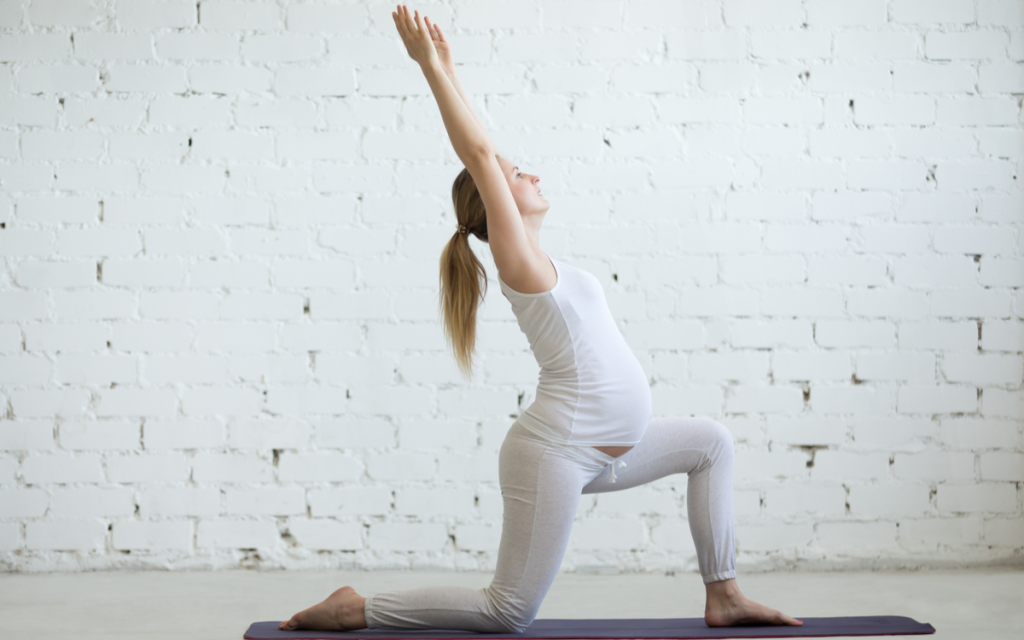
It is a great go for people that have limited hip flexors, which are the muscles that leave the front of your hip. Because of adjustments in the location of the pelvis, these muscles could become tight during pregnancy.
- Needed devices: yoga exercise floor covering or a pillow.
- Hip flexors, glutes, and core muscular tissues were worked.
- Kneel on the flooring, with your knees propped up on a yoga exercise floor covering or padding for support. Advance one step until your front knee and hip are both at 90 degrees. Gradually lean forward as you exhale, putting your weight on your front leg. By revolving your back hip ahead till you really feel a stretch down the front of your hip and thigh, you can contest your hips. For equilibrium, order a wall surface or a chair. Keep this position for 30 secs. Repeat on the opposite side.
Forward Fold (Uttanasana)
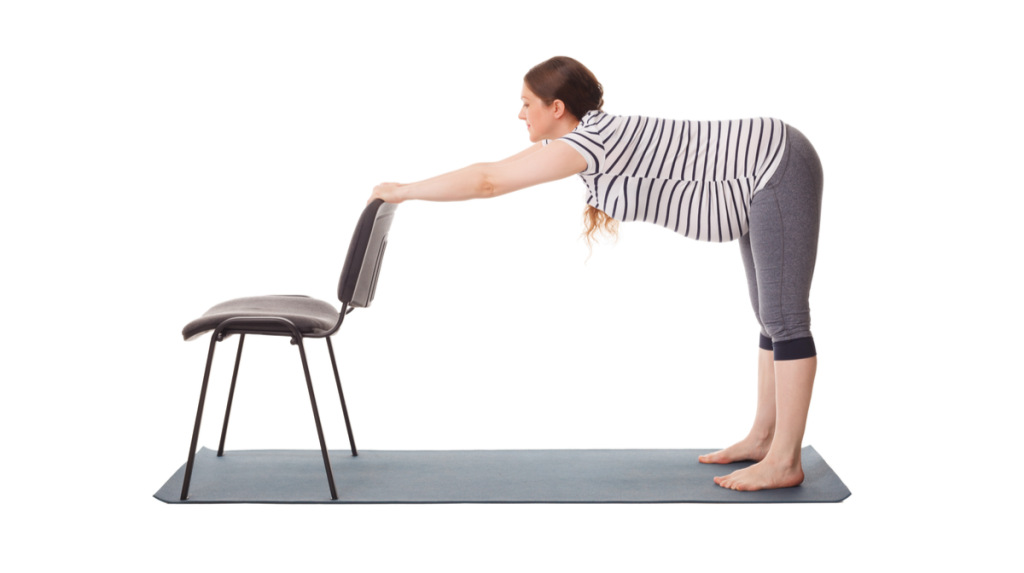
The big muscle mass that leaves the rear of your upper legs, known as hamstrings, is often tightened up while pregnant. Low pain in the back, leg pain, as well as inadequate motion patterns can all be caused by tight hamstrings.
- No special devices are called for
- Hamstrings reduced back, and calves are amongst the muscle mass that functioned. Begin by depending on a mat with your toes directed ahead and your feet somewhat broader than hip-width apart. Gradually lower your hands to the floor while leaning ahead with a flat back. Proceed until you feel a stretch in your back legs. You can lay your hand someplace that is comfortable for assistance yet stay clear of resting it on the knee joint. Keep this placement for 30 secs. Stroll your hands over away, then the various others, up until you feel an excellent stretch. Repeat 3 times a lot more.
Make a consultation with your doctor:
Ensure you have your healthcare provider’s authorization before starting a prenatal yoga technique. If you go at the risk of premature labor or have certain clinical worries, such as heart illness or back difficulties, you may not have the ability to do prenatal yoga.
Disclaimer:
“KareOptions does not have any intention to provide specific medical advice, but rather to provide its users and/ or the general public with information to better understand their health. All content (including text, graphics, images, information, etc.) provided herein is for general informational purposes only and is not a substitute for professional medical advice, care, diagnosis, or treatment. KareOptions makes no representation and assumes no responsibility/ liability for the accuracy of the information, advice, diagnosis, or treatment provided herein or on its website. NEVER DISREGARD PROFESSIONAL MEDICAL ADVICE OR DELAY IN SEEKING TREATMENT BECAUSE OF SOMETHING YOU HAVE READ IT HERE OR ACCESSED THROUGH THE KAREOPTIONS WEBSITE.


